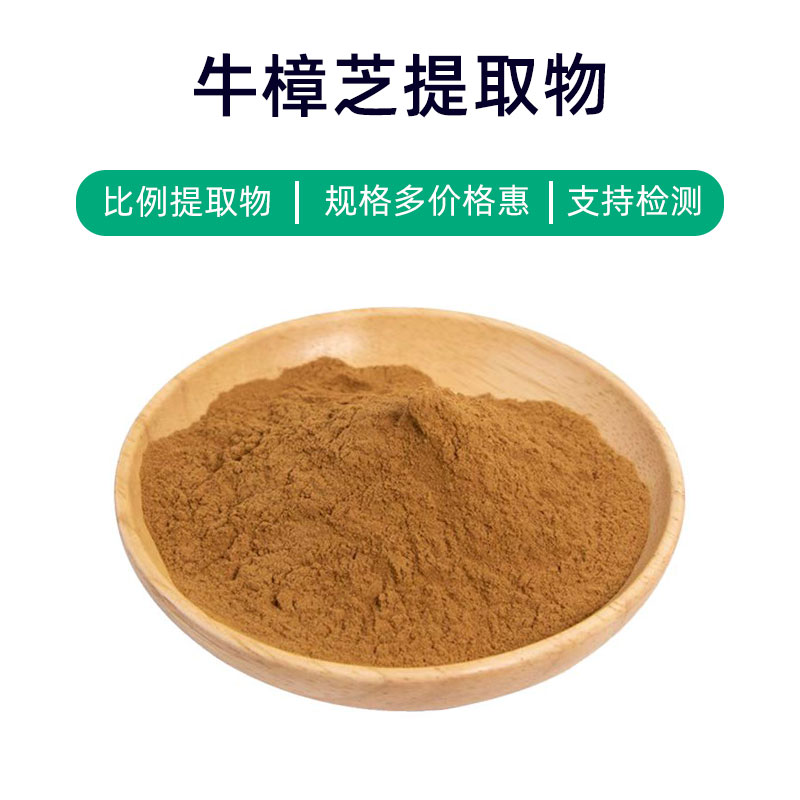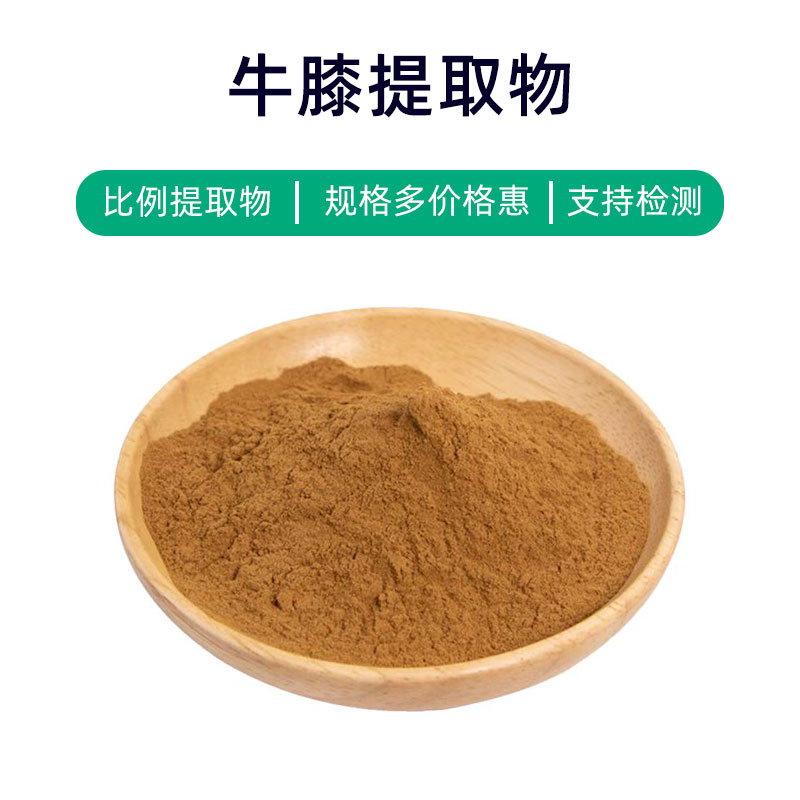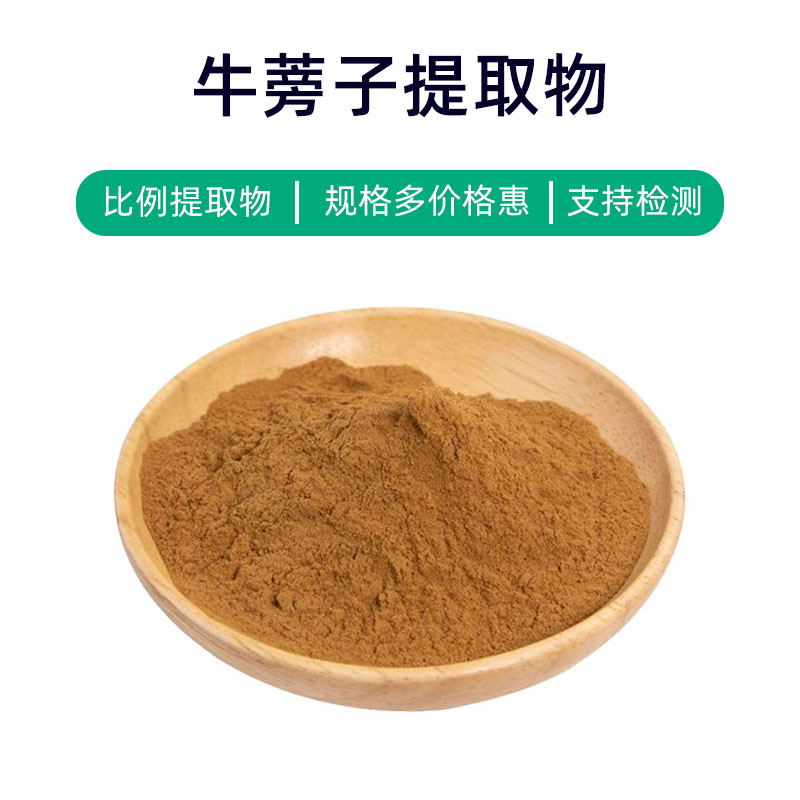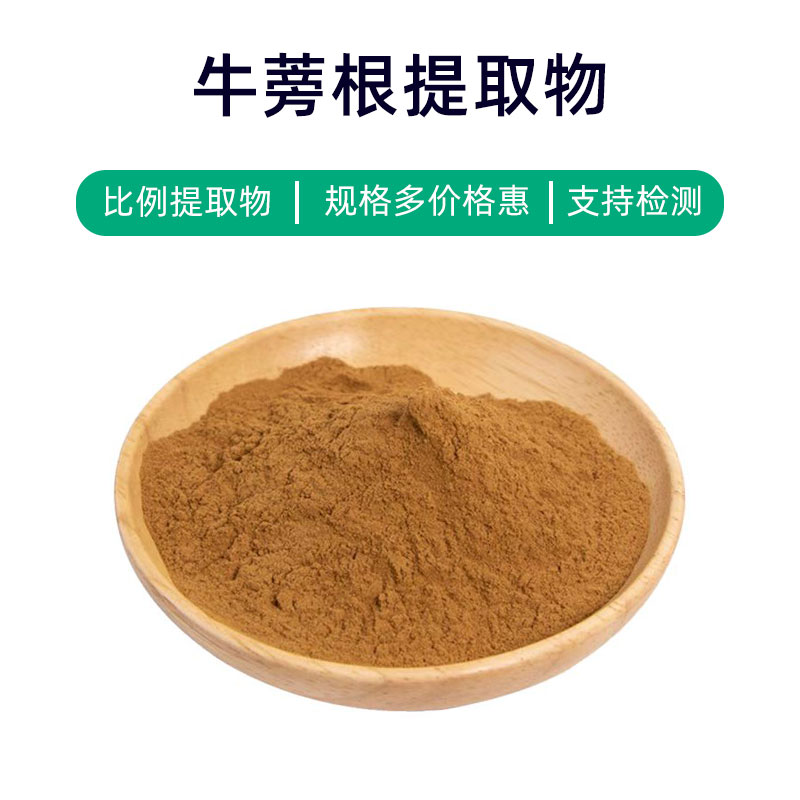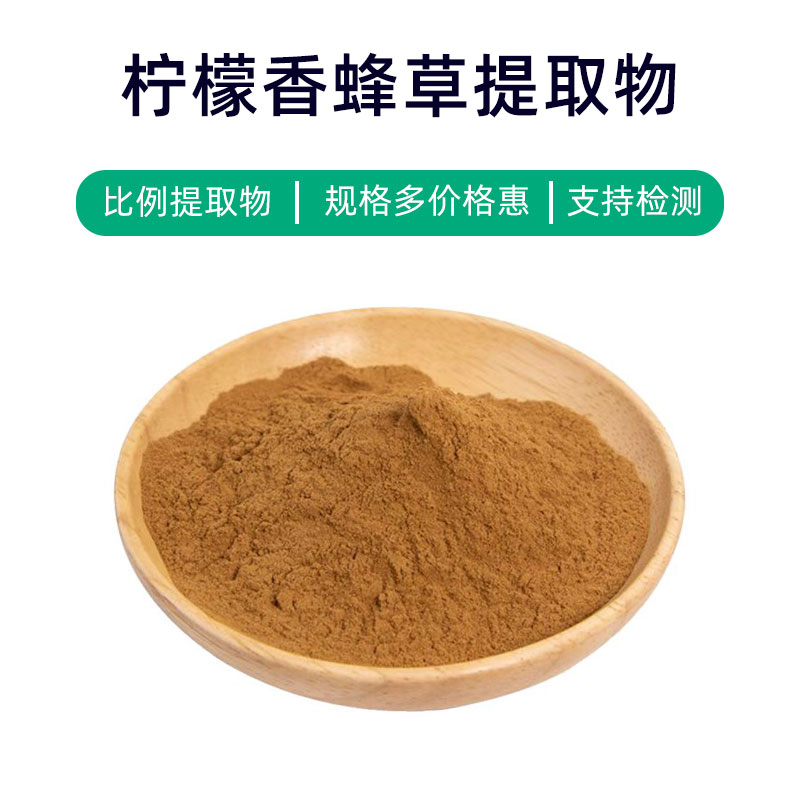Ganoderma (Purple Reishi) Extract Product Introduction
Ganoderma (Purple Reishi) extract is a deep purple powder extracted from the Ganoderma fungus, with main ingredients including polysaccharides, triterpenes, and polyphenols. These components offer various benefits, such as enhancing immunity, providing antioxidant properties, reducing inflammation, and regulating blood sugar and lipids.
Ganoderma extract is widely used in the pharmaceutical, health product, and cosmetics industries. In medicine, it is utilized as a traditional Chinese medicine believed to regulate immune function, improve sleep, alleviate fatigue, and have anti-tumor effects. In the health products sector, it’s often made into dietary supplements to boost immunity and promote overall health. In cosmetics, it is included in skincare products, claiming to have antioxidant, anti-aging, moisturizing, and skin-repairing properties.
In summary, Ganoderma (Purple Reishi) extract, as a natural plant extract, has various health benefits and is widely favored in the pharmaceutical, health product, and cosmetics industries.
Ganoderma (Purple Reishi) Extract Manufacturing Process
The production process of Ganoderma (Purple Reishi) extract generally involves the following main steps:
- Cultivation of Ganoderma Strain: Select high-quality Ganoderma strains and propagate them using sterile cultivation techniques to produce high yield and quality mycelium.
- Fermentation: Inoculate the cultivated mycelium into a suitable culture medium for fermentation. Under controlled conditions of temperature, humidity, and ventilation, let the mycelium grow and reproduce, producing the desired active ingredients.
- Extraction: Break down the fermented mycelium and extract it using methods such as water extraction, alcohol extraction, and supercritical CO2 extraction to obtain the active components.
- Concentration: Concentrate the extracted liquid by removing excess solvents and moisture to obtain concentrated Ganoderma extract.
- Drying: Dry the concentrated extract using methods like spray drying or vacuum drying to turn it into powder or block form.
- Grinding and Sieving: Grind and sieve the dried extract to achieve the desired particle size.
- Packaging: Package the final product using methods such as foil bags or sealed bottles to ensure its quality and safety.
- Quality Control: Conduct quality inspections, including tests for ingredient content, microbial levels, and heavy metals, to ensure compliance with relevant standards.
- Storage: Store the packaged product in a dry, cool, and ventilated environment, away from direct sunlight and moisture to extend its shelf life and stability.
The above outlines the general production process of Ganoderma (Purple Reishi) extract, which requires strict control and operation at each step to ensure the quality and safety of the final product.
Ganoderma (Purple Reishi) Extract Efficacy and Side Effects
As a natural herbal remedy, Ganoderma (Purple Reishi) extract is widely applied in medicine and health care, offering various effects mainly including the following:
- Immune Regulation: Studies show that Ganoderma extract contains various active components, such as polysaccharides and triterpenes, which can regulate immune system functions and enhance immunity, helping to prevent and alleviate infectious diseases.
- Antioxidant Properties: Ganoderma extract is rich in various antioxidants, such as polyphenols and vitamins, which can neutralize free radicals, reduce oxidative stress on cells, delay aging, and protect cardiovascular and nervous system health.
- Anti-Tumor Effects: Research indicates that the active components in Ganoderma extract can inhibit tumor growth and spread, promote tumor cell apoptosis, suppress angiogenesis, and regulate immune functions, providing certain therapeutic support for some tumors.
- Regulating Blood Sugar and Lipids: Components like polysaccharides and triterpenes in Ganoderma extract are found to help regulate blood sugar and lower lipid levels, beneficial for treating metabolic disorders such as diabetes and hyperlipidemia.
- Anti-Inflammatory and Antibacterial: Ganoderma extract is full of bioactive components that exhibit significant anti-inflammatory and antibacterial effects, effectively alleviating inflammation and preventing and treating infectious diseases.
- Liver Protection: Studies suggest that Ganoderma extract can protect liver cells, promote their regeneration, and regulate liver function, providing certain protective and auxiliary therapeutic effects for liver diseases like hepatitis and fatty liver.
- Nervous System Regulation: The active components in Ganoderma extract can regulate neurotransmitters, improve sleep, alleviate anxiety and depression, thereby helping enhance nervous system function and reduce stress and fatigue.
- Side Effects: Although Ganoderma extract is generally considered a safe natural herb, long-term or excessive use may lead to side effects such as dizziness, nausea, and gastrointestinal discomfort. Therefore, it is recommended to follow medical advice and control the dosage prior to use.
In conclusion, Ganoderma (Purple Reishi) extract has multiple effects, including immune regulation, antioxidant properties, anti-tumor effects, regulating blood sugar and lipids, anti-inflammatory and antibacterial actions, liver protection, and nervous system regulation, showcasing extensive applications in medicine and health products.
Ganoderma (Purple Reishi) Extract Applications and Dosage
As a natural herb with various medicinal values, Ganoderma (Purple Reishi) extract's applications span the fields of medicine, food, and cosmetics. Here’s an overview of its applications in different areas and recommended dosages:
- In the Pharmaceutical Field:
- Usage: Ganoderma extract is widely applied in preventing and aiding the treatment of various diseases, including immune regulation, anti-tumor effects, antioxidant properties, anti-inflammatory, and antibacterial applications.
- Dosage: Typically, Ganoderma extract can be made into oral preparations (such as capsules, tablets, or granules) or injections. The dosage depends on the specific formulation and should usually be taken as per doctor’s advice.
- In the Food Sector:
- Usage: Ganoderma extract is often added to health foods and functional foods for enhancing immunity, delaying aging, and regulating blood sugar and lipids.
- Dosage: In health foods, it usually appears in forms like capsules or liquids, and it is advisable to follow the product's instructions or consult a physician for appropriate use.
- In the Cosmetics Industry:
- Usage: Ganoderma extract is widely used in skincare products for its antioxidant, anti-inflammatory, moisturizing, and skin-repairing properties, making it suitable for anti-aging and soothing sensitive skin.
- Dosage: Typically found in serums, masks, and lotions, it’s recommended to follow the product instructions for correct usage.
- Dosage Control:
- In Medicine: Dosage should be under medical supervision to avoid excessive or prolonged use.
- In Food and Cosmetics: Generally, it should be used according to the recommended dosage in the product instructions.
In summary, Ganoderma (Purple Reishi) extract can be used as a medicinal aid for treating various diseases with careful dosage; in food and cosmetics, it serves as a health and skincare component, with usage and dosing depending on specific product instructions. In any case, it's advisable to use under the guidance of professionals to ensure safety and effectiveness.
Ganoderma (Purple Reishi) Source Plant Introduction, Distribution, and Growth Environment
Ganoderma (scientific name: Ganoderma lucidum) is a valuable traditional Chinese medicinal material, also known as Purple Reishi, Lingzhi, or Red Reishi, belonging to the fungi kingdom. Below are detailed insights on the source plant of Ganoderma extract, its distribution, and growth environment:
- Plant Introduction:
Ganoderma is a woody, saprophytic fungus that typically grows at the base of trees or on decaying wood, exhibiting a cap or disk-like structure. Its fruiting body (cap) is fan-shaped or semi-circular, with a smooth surface, typically reddish-brown or purple-black in color, and has a glossy appearance. - Distribution:
Ganoderma grows widely, primarily found in forests of subtropical and temperate regions including Asia, North America, Europe, and Oceania. In China, it is mainly distributed in regions south of the Yangtze River, such as Jiangsu, Zhejiang, Fujian, Guangdong, and Guangxi provinces. - Growth Environment:
- Temperature: The suitable temperature range for Ganoderma growth is between 15°C and 30°C, with the optimal growth temperature around 25°C.
- Humidity: Ganoderma requires high humidity, ideally growing under conditions of 70%-90% humidity.
- Light: It thrives in semi-shaded, humid environments and requires some light during growth, yet should not be directly exposed to strong sunlight.
- Soil: Ganoderma grows in rich, well-ventilated soil with ample humus, typically relying on trees as its host.
- Growth Season:
The growth season for Ganoderma typically spans from spring to autumn, with spring and autumn being the primary growth periods, while summer often sees it in a dormant state. - Cultivation Techniques:
To meet market demands, the cultivation of Ganoderma has been developed artificially. Cultivating Ganoderma relies on wooden substrates, with controlled environmental conditions like temperature, humidity, and ventilation, along with the addition of adequate nutrients to promote growth and mycelium proliferation.
In summary, as an important traditional medicinal material, Ganoderma's growth environment significantly impacts its quality and efficacy. Understanding Ganoderma's growth environment and cultivation techniques is crucial for better utilization and conservation of this valuable resource.
Ganoderma (Purple Reishi) Extract Processing and Storage
The processing and storage of Ganoderma (Purple Reishi) extract are crucial to ensure its quality and active components. The processing generally includes the following steps:
- Extraction: The active components in Ganoderma are typically extracted using water extraction or organic solvent methods. These extraction methods effectively draw out active ingredients like polysaccharides and triterpenes from Ganoderma.
- Concentration: The extracted Ganoderma extract is concentrated to remove excess moisture, increasing its concentration and stability; common methods of concentration include vacuum concentration and spray drying.
- Grinding: The concentrated Ganoderma extract may need to be ground down to ensure finer particles for subsequent processing and application.
- Packaging: After completing the above steps, Ganoderma extract is packed in sealed containers to prevent external contamination and moisture ingress, maintaining the stability of its active components.
For storage, Ganoderma extract should be kept in a cool, dry, and ventilated place, away from direct sunlight and elevated temperatures. Sealed packaging effectively prevents oxygen and moisture from entering, helping to extend its shelf life. Additionally, avoid contact with other chemicals to maintain its quality and stability.
Monica Sun is a seasoned expert in the plant extraction industry with over a decade of experience in research and production. She specializes in the extraction and purification of plant active ingredients, focusing on driving innovation in natural product applications. Monica has participated in the development of multiple functional plant extracts, delivering high-value natural raw material solutions for the health food, pharmaceutical, and dietary supplement sectors.









